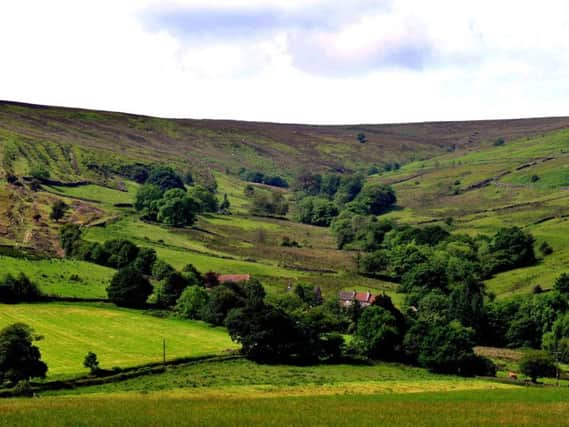North York Moors project could expand


Leaders of the £3.9m project in the North York Moors National Park said following a successful first year, it was hoped to secure further funds to extend the project, which had initially been constrained by red tape.
The four-year scheme is focusing on an area from Goathland in the east, following George Stephenson’s original rail route north to Grosmont, before turning west along the Esk Valley to Kildale, and over the moors south eastwards to Rosedale.
Advertisement
Hide AdAdvertisement
Hide AdA meeting of the North York Moors National Park Authority heard work to record and conserve a range of monuments and heritage sites has started on Rail Trail Bridges and at sites such as the Esk Valley Mine and Warren Moor mine, the latter being the only Victorian ironstone mine chimney still standing in the UK.
Next year will see action to tackle the crumbling kilns at Rosedale, where huge kilns were installed to carry out the initial calcining process before the iron ore – up to 250,000 tonnes in the 1860s – was transported to Teesside.
Teesside University is supporting a graduate intern programme for computer games designers to build virtual 3D models of heritage sites, such as the Rosedale kilns, when they were operational. These will be displayed to the public at a new exhibition centre at the Moors Centre in Danby next year.
Environmental work has included creating mine water discharge remediation ponds at Sil Howe and Clitherbeck, which have proved successful in
reducing iron ochre pollution in watercourses.
Advertisement
Hide AdAdvertisement
Hide AdMembers were told a feasibility study was underway on water voles, looking at their distribution across the Land of Iron area over recent years, and the potential for a landscape-scale mink control and water vole reintroduction programme.
Tom Mutton, Land of Iron programme manager, said the scheme had also awarded grants of between £300 to £12,000 to an array of groups for projects ranging from supporting public transport to a community textiles project using iron to dye fabrics.
He said: “There’s no upper or lower limit, so if someone comes along with a cracking idea with a £30,000 project there’s the opportunity to go for it.”
Members questioned why the scheme had not covered a wider area, given the array of nearby iron industry-related heritage sites.
Advertisement
Hide AdAdvertisement
Hide AdCouncillor Heather Moorhouse said: “I appreciate there has got to be a boundary and it’s more than a little bit upsetting for the people of Great Ayton that they weren’t included because there is all the mine workings and tower there.”
Mr Mutton said the scheme had been limited to a 77 square mile area of the national park to fit in with Heritage Lottery Fund criteria, but with other sources of funding, such as the Sirius Minerals polyhalite mine, the area in which work is undertaken could be extended.
He added: “The Cleveland Ironstone story is so massive compared with ours, it’s the same seam of ironstone, but a different side of the hill.
“There’s a much bigger story to tell and the visitor doesn’t see that boundary line, they see the mine or piece of industry in the Cleveland and North York Moors area.”